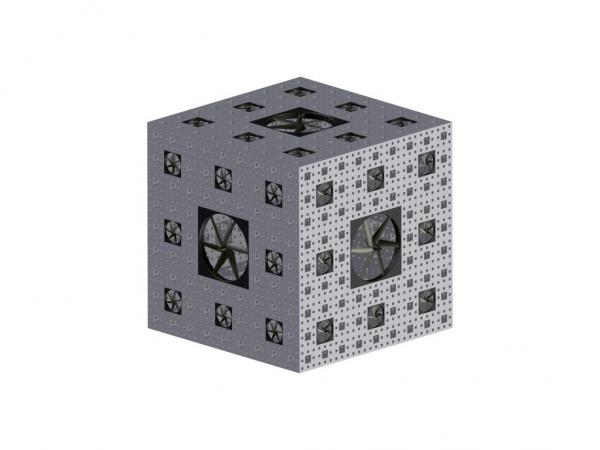BY LETTER
Olfactory Array
Technology > Application > Augmentics
Technology > Application > Everydaytech
Technology > Technology Levels > High Tech / Hitech
Technology > Application > Augmentics > Neurotechnology
Technology > Application > Everydaytech
Technology > Technology Levels > High Tech / Hitech
Technology > Application > Augmentics > Neurotechnology
 Image from John Edds |
An olfactory array is a device used to detect volatilized and fluid-phase chemical compounds suspended in air, or another fluid medium.
They range widely in size and capability. The smallest varieties, approximately the volume of a cube 50µm on a side, have several hundred million chemical receptors. Olfarrays can be arbitrarily large, but rarely exceed a mass that makes them impractical to transport.
Olfarrays have a fractal architecture to maximize surface-area. A common structure is that of a Menger sponge. Turbines of the appropriate scale are spaced periodically throughout to facilitate circulation of the fluid medium. A nano/micro/macromechanical transport network removes the absorbed compounds after detection for collection or disposal.
Olfarrays, or sniffers as they are colloquially referred to, are a ubiquitous technology. Few anglenetted environments lack them, using them to sense the presence of toxins, chemical and nuclear explosives, and other threats. Most robots, vecs and cyborgs operating in an atmosphere or hydrosphere have at least one, and many biont citizens carry or wear them for sensory augmentation purposes.
Related Articles
- Chemicanalyzer
- ClearEye
- Ear, The
- Happy Tongue - Text by John B
Common device used by those who can't afford good tasting food. It is a nanotech dose that coats the throat, palate, teeth and tongue to simulate the texture and flavor of a preferred food. It is usually available in week-long doses, but permanent implants are also available for an increased cost. - Sensors for use in Space Combat and Defence
- Vision Chip - Text by M. Alan Kazlev
Information Age implant used by baseline and nearbaseline humans, involving silicon emulation of the human retina that captures the algorithm of early mammalian visual processing, and an algorithm called center surround filtering. By the early interplanetary age this was replaced by bioware, except among some dedicated cyborg clades.
Appears in Topics
Development Notes
Text by John Edds
Initially published on 21 June 2010.
Initially published on 21 June 2010.






